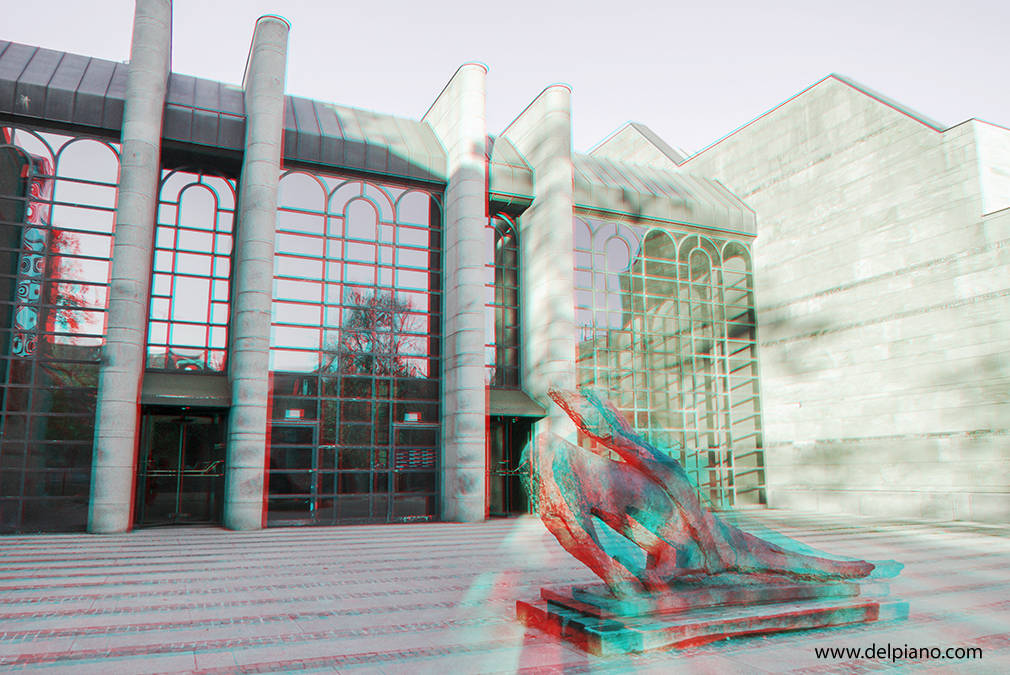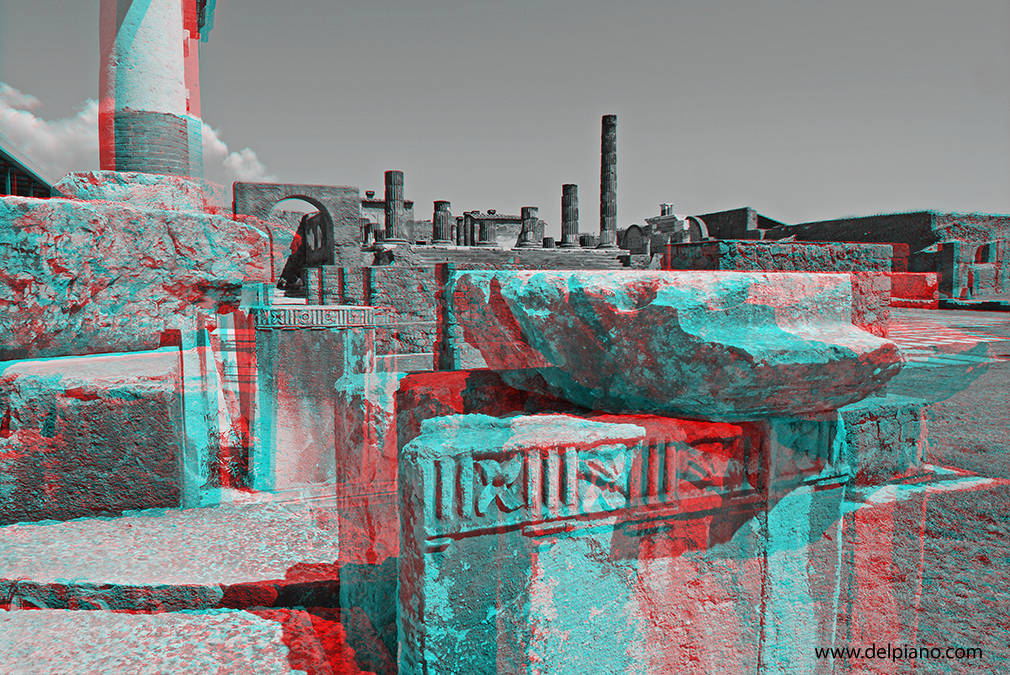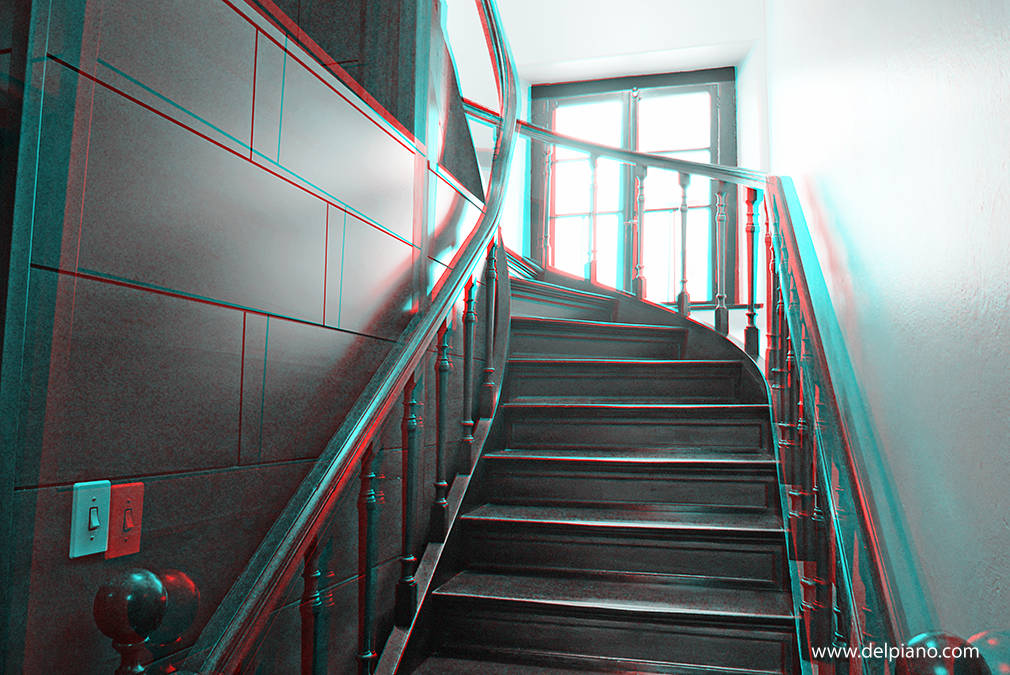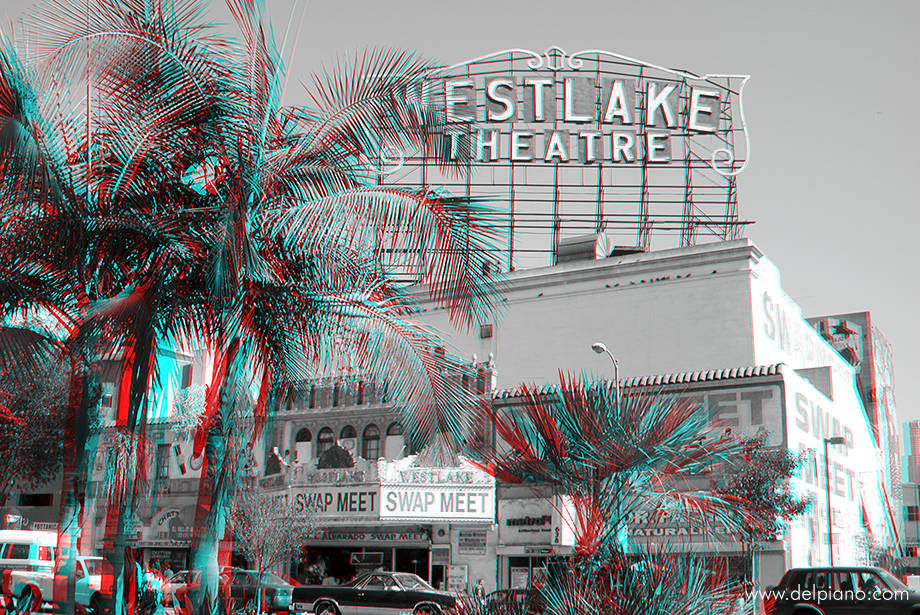
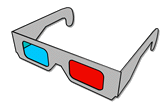
3D Anaglyph galleries: Art - Sculptures
Anaglyph photography is by itself a form of Art. The one with the capital "A".
And it may seem that the loss of color may seem to create problems for receiving a strong visual impact, but it is not really so. It is amazing how much lots of people are so attached to the idea of "color", can't live without it, and then do not perceive it correctly.
What is our real perception?
As lots of people, I grew up with Black and White. Books, newspapers, not color magazines, B/W TV, B/W photography.
The transmission of visual information was made through B/W media only. No colored HiDef Retina screens. But in reality, it didn't really matter.
In the same way we can appreciate a wonderful sax solo made by Charlie Parker (strictly monophonic) we don't need color to "get the emotion" out of most of what we see during the day.
Is color so necessary to our life, or is there much more than that?
Quite on the contrary: color sometimes pollutes the images we receive, adding some information that may not be really necessary, and sometimes is even misleading.
But color is great, gives lots of emotions, I personally am very fond of color, while in terms of "information" it is not always really necessary. Colorblind people can lead their life with little problem, and have a capability of seeing difference in shades that regular "color seeing people" don't have. A different kind of perception of light and shade, white, black and all the betweens.
We all have to be colorblind, for a moment, when we see an old B/W photo.
And at the same time we all see (imagine) color in a
B/W photo. That's a brain process.
Anaglyph photography brings an extra feature: DEPTH
Even if depth is always there, in every object we see, with the aid of anaglyph photography we can "really see it", feel it. And the brain can fill in the blanks giving a sensation of color. We know treetops are green and faces are pink, we don't really need color for that, but we do not always perceive how deep can be a hole in the wall or the distance between two buildings.
Take it easy and let your brain wander and be surprised. This is Anaglyph Art.
